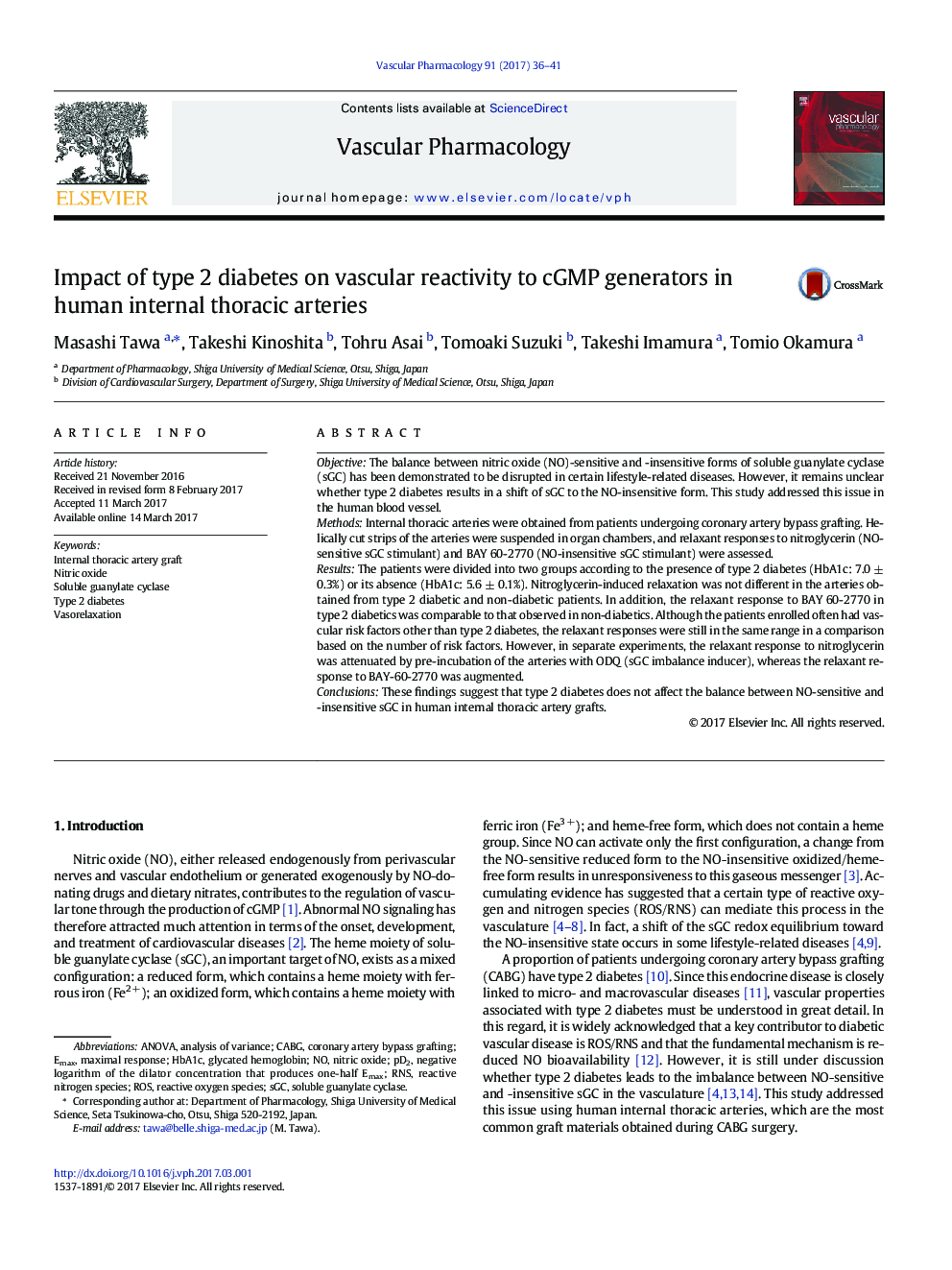| Article ID | Journal | Published Year | Pages | File Type |
|---|---|---|---|---|
| 5558886 | Vascular Pharmacology | 2017 | 6 Pages |
ObjectiveThe balance between nitric oxide (NO)-sensitive and -insensitive forms of soluble guanylate cyclase (sGC) has been demonstrated to be disrupted in certain lifestyle-related diseases. However, it remains unclear whether type 2 diabetes results in a shift of sGC to the NO-insensitive form. This study addressed this issue in the human blood vessel.MethodsInternal thoracic arteries were obtained from patients undergoing coronary artery bypass grafting. Helically cut strips of the arteries were suspended in organ chambers, and relaxant responses to nitroglycerin (NO-sensitive sGC stimulant) and BAY 60-2770 (NO-insensitive sGC stimulant) were assessed.ResultsThe patients were divided into two groups according to the presence of type 2 diabetes (HbA1c: 7.0 ± 0.3%) or its absence (HbA1c: 5.6 ± 0.1%). Nitroglycerin-induced relaxation was not different in the arteries obtained from type 2 diabetic and non-diabetic patients. In addition, the relaxant response to BAY 60-2770 in type 2 diabetics was comparable to that observed in non-diabetics. Although the patients enrolled often had vascular risk factors other than type 2 diabetes, the relaxant responses were still in the same range in a comparison based on the number of risk factors. However, in separate experiments, the relaxant response to nitroglycerin was attenuated by pre-incubation of the arteries with ODQ (sGC imbalance inducer), whereas the relaxant response to BAY-60-2770 was augmented.ConclusionsThese findings suggest that type 2 diabetes does not affect the balance between NO-sensitive and -insensitive sGC in human internal thoracic artery grafts.
Graphical abstractDownload high-res image (226KB)Download full-size image
